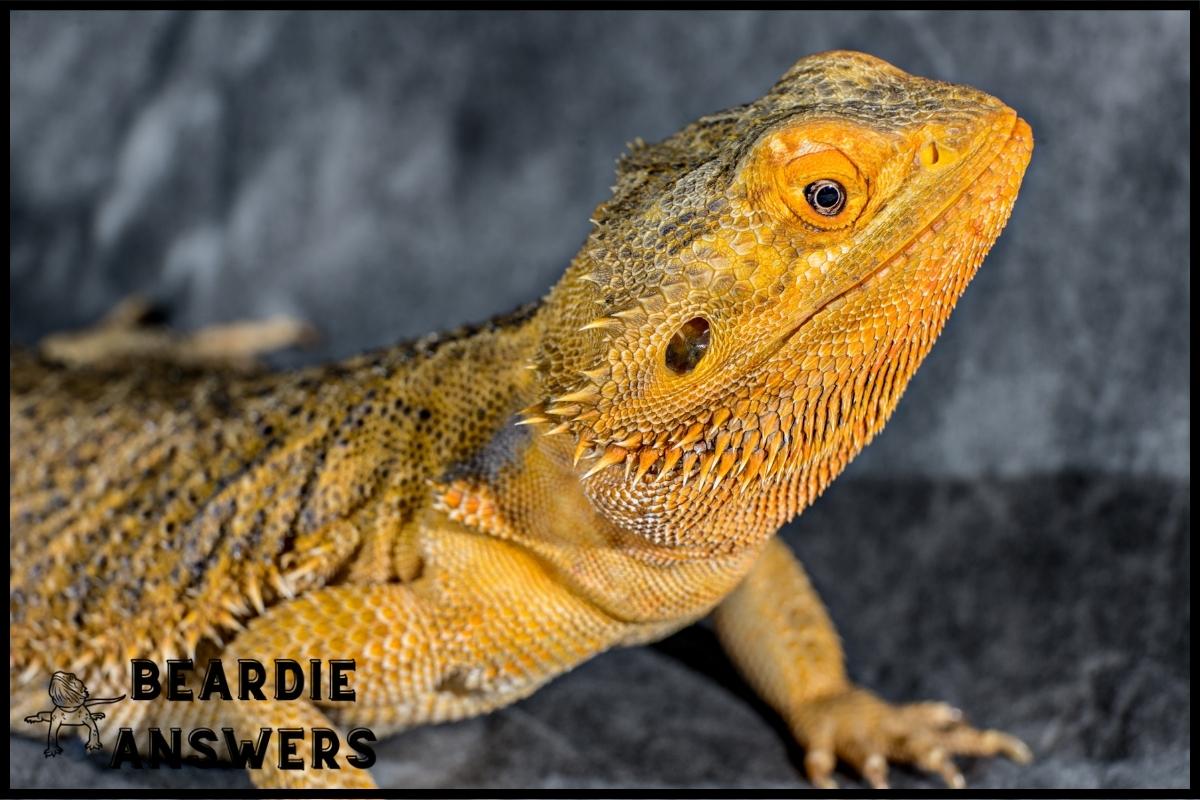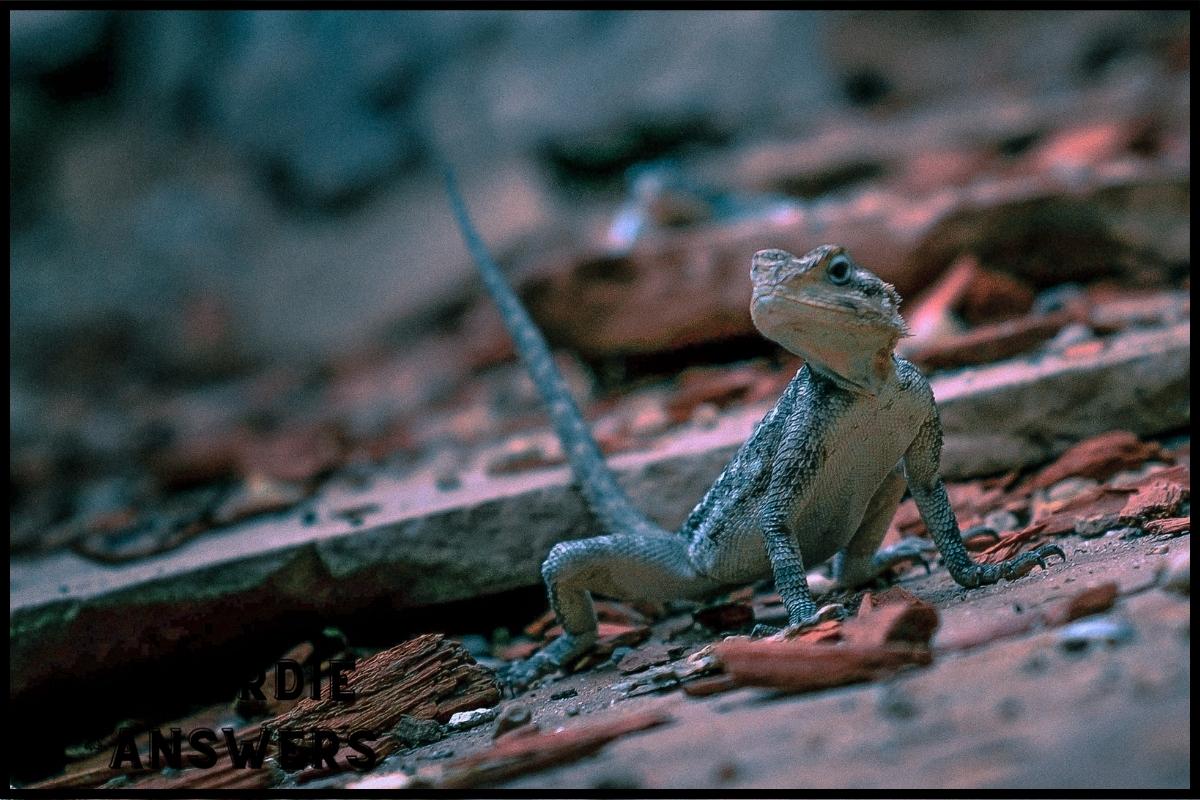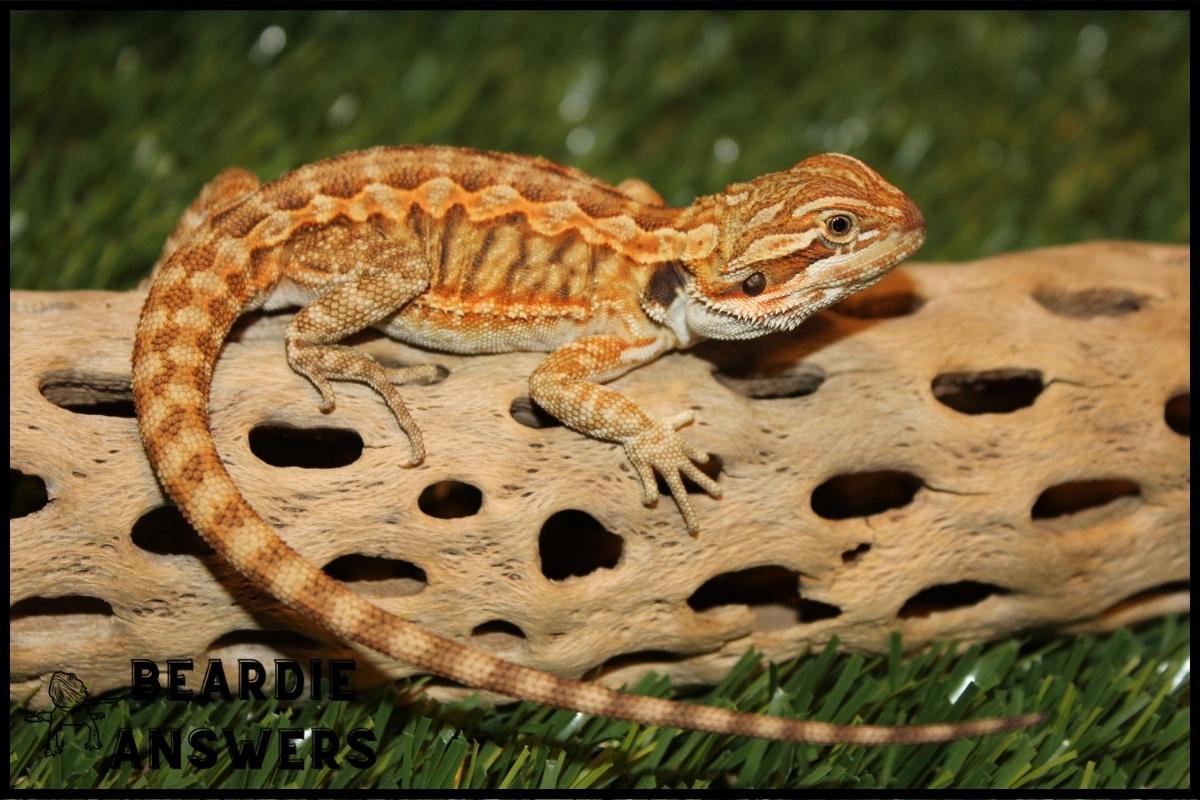[su_note note_color=”#eee”]
Bearded dragons are generally docile and friendly, but they can become aggressive if they feel threatened or stressed. Signs of aggression include puffing up their beard, darkening their color, and gaping their mouth. With proper handling and care, they can become very tame and even enjoy being held.[/su_note]
Though their reputation as ferocious lizards may lead some to believe that bearded dragons can be quite aggressive, the truth is far from it.
Generally speaking, these reptiles are docile and friendly creatures who only become aggressive when feeling threatened or stressed.
In this article, we’ll explore why bearded dragons might react aggressively in certain circumstances and how owners can help prevent them from doing so.
What You'll Learn
Causes Of Aggression In Bearded Dragons
Although bearded dragons are generally docile and friendly, they can become aggressive if threatened or stressed. There are several common causes of aggression in these reptiles, often involving handling stress, environmental changes, social interaction, diet changes, and cage size.
Stressful situations like being held too tight or moved around without proper care can trigger aggression in a bearded dragon.
Additionally, disruptions to their environment such as loud noises or unfamiliar people can cause them to become agitated and lash out.
Social interactions with other animals may also lead to threats for dominance which can result in the display of hostile behavior from your pet reptile.
Changes in diet combined with insufficient nutrition will also contribute to increased aggression due to nutrient deficiencies that could make them irritable.
Lastly, having an enclosure that is too small could be another factor behind displays of aggression as it limits their ability to explore and exercise properly.
When dealing with an aggressive bearded dragon, it’s important to first identify what might be causing the issue so you can address it accordingly.
Dealing With Aggression In Bearded Dragons
It’s important to be able to recognize aggressive behaviour in bearded dragons, so we can take steps to reduce stress and anxiety which can lead to it. It’s also important to ensure their environment is suitable and that we’re providing them with the right kind of care.
Identifying Aggressive Behaviour
Bearded dragons are normally fairly docile creatures, but they can become aggressive if their environment is not peaceful or comfortable. Identifying when a bearded dragon is feeling threatened and turning to aggression can be tricky as there are specific social hierarchy dynamics that must be taken into account, in addition to environmental stressors.
Paying attention to the body language cues of your pet such as tail flicking, gaping mouth and hissing can help you understand their emotions better so you know how to react appropriately.
Knowing what signs may lead up to an outburst will enable you to provide them with a safe and secure home where aggression won’t have to be used for survival.
Reducing Stress And Anxiety
To help reduce stress and anxiety in bearded dragons, it’s important to consider their socialization techniques, environmental enrichment, as well as providing a proper diet.
Socializing your pet can be done through talking to them or regularly handling them so they become comfortable with you.
You should also aim to provide enriching activities such as hiding food around the enclosure for them to find and offering items like rocks or sticks that provide mental stimulation.
Lastly, make sure you are feeding your dragon a balanced diet rich in vitamins and minerals to ensure optimal health.
With these steps taken into consideration, you will have successfully created an environment where aggression won’t be necessary for survival.
Characteristics Of Bearded Dragons
Bearded dragons have many unique characteristics that make them popular pets.
Handling techniques should be gentle and slow in order to avoid stressing the animal, since stress can cause aggression in some cases.
When it comes to enclosure size, bearded dragons need enough space for movement but not too much room where they may become overwhelmed or anxious.
Their diet is composed of both insects and vegetables, so a balanced diet must be provided on a regular basis.
Bearded dragons also shed their skin periodically, which happens more frequently when they are juveniles than adults.
Temperature control within the enclosure is also very important; maintaining warm basking areas as well as cooler regions helps keep your pet comfortable and healthy.
Finally, care and maintenance are essential components to keeping a happy and healthy bearded dragon.
Care And Maintenance
Housing: When caring for a bearded dragon, it’s important to provide them with an appropriate enclosure that has enough room for them to move around and a few hiding spots.
Diet: They should be fed a balanced diet of insects and vegetables, and it’s important to make sure that their food is appropriately sized for their mouths.
Handling: When handling a bearded dragon, it’s important to do so gently and with care – they should never be picked up or forced, and should be allowed to explore on their own terms.
Housing
Bearded dragons are known for being quite low-maintenance when it comes to their care, but housing them is still an important factor in keeping your dragon healthy and happy.
When selecting a habitat or enclosure size, the rule of thumb is that bigger is better. A 20 gallon tank should be considered the absolute minimum home size, with larger enclosures such as 40 gallon tanks preferred.
Additionally, you’ll want to make sure the environment inside your pet’s cage matches its natural habitat by adding items like branches and rocks for hiding spots and basking areas.
With these elements put together properly, you can provide your bearded dragon with a stress free living space where they can feel safe and comfortable!
Diet
Now that we know how to properly house a bearded dragon, let’s move on to diet.
When it comes to feeding your pet, there are several factors you’ll need to take into account. For starters, they’re omnivores and should have both insects and vegetables in their diets. It’s also important to understand the temperature requirements for different foods – crickets will require a warmer environment than leafy greens would!
You should aim for 2-3 meals per day with proper portions of protein and veggies mixed together. Vegetarian diets can be supplemented with calcium powder if needed as well. There’s no one-size fits all approach when it comes to feeding your beardie, so make sure you do research before deciding on a meal plan for them.
With the right knowledge and preparation, you can ensure your pet is getting all the nutrients they need!
Handling
Once you’ve got their diet down, it’s time to look into handling techniques.
It’s important for your beardie to feel safe and secure when being handled – so make sure the environment is calm and quiet.
To start off, always let them crawl onto your hand first before picking them up.
They may take some getting used to but with patience and care, they can become comfortable with handling over time.
When setting up a cage for your dragon, keep in mind that taller cages are better as these provide more space for climbing and exploring.
All of this combined will help create a healthy living situation for your pet and ensure that both their dietary needs and handling preferences are met!
Benefits Of Having A Bearded Dragon
Bearded dragons make great pets because of the many benefits they offer. They are relatively low-maintenance, and they love socializing with their owners – making them a perfect companion for those who don’t have much time to dedicate to pet care.
Additionally, providing environmental enrichment and following proper diet guidelines can help keep your bearded dragon happy and healthy. Here are three key points to consider when taking care of one:
- Socializing Bearded Dragons – Spend some quality time with your pet by interacting with them daily. Talk softly, let them perch on your shoulder or arm while you watch TV, and provide plenty of toys to stimulate playtime activities.
- Proper Diet – Provide a balanced diet that includes mealworms, crickets, vegetables, fruit, etc., as well as vitamins and minerals in order to ensure optimal growth.
- Handling Techniques & Habitat Design – Use gentle handling techniques when picking up or moving your beardie around its enclosure; also ensure it has enough room to roam around freely without feeling cramped or stressed out.
With these tips in mind, owning a bearded dragon can be an incredibly rewarding experience!
Conclusion
In conclusion, bearded dragons can make great family pets. Not only are they docile and friendly most of the time, but their outgoing personalities make them a joy to be around. They require minimal care and maintenance as well, making them relatively low-maintenance for pet owners.
While they may become aggressive if threatened or stressed, following proper care guidelines and being mindful of their environment can help minimize any outbursts.
With all the amazing benefits that come with owning a bearded dragon, it’s no wonder why so many people are drawn to them! It’s like having your own live action movie in your house every day; they’re never boring!
All in all, if you’re looking for an exciting and unique pet who will bring you endless entertainment – look no further than a Bearded Dragon!

Hi! My name is Bryan, I am the “one behind the words” here are BeardieAnswers.com. I believe that providing quality care and nutrition is the best way to ensure the health of your pet. Every beardie is special and deserves the best care and attention. If you have questions about your bearded dragon, please don’t hesitate to ask! View My Full Author Page




